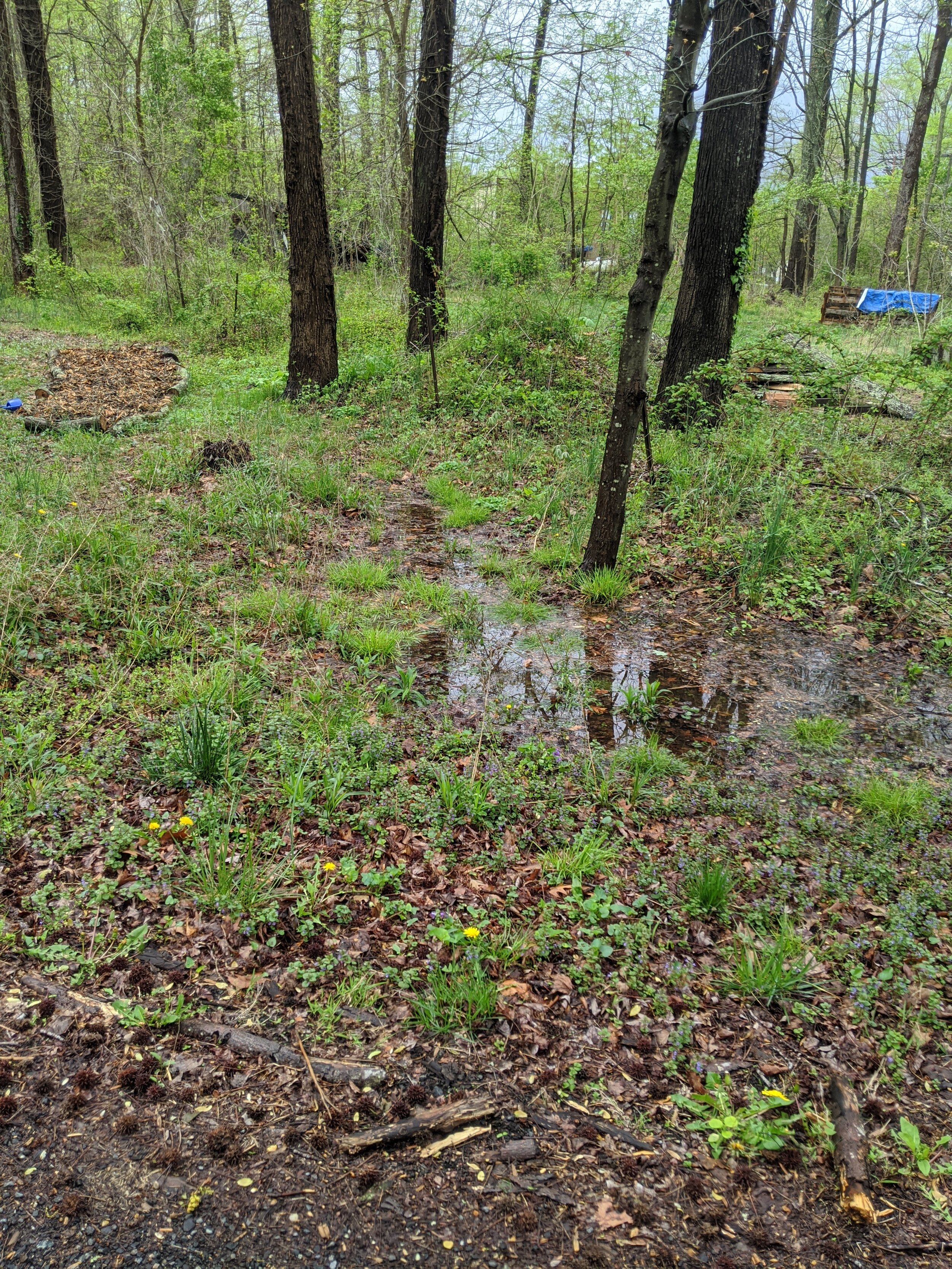Oh Swaley!
Contour swales are one of the hallmarks of permaculture. When it comes to water, the permaculture slogan is “Slow it, spread it, soak it.” The swales (ditches) and berms slow the water so that it soaks into the ground rather than running off, which can carry away nutrients from your land and lead to flooding down the road.
Our land can get pretty swampy!
In dry environments, swales and berms can help you store water in the soil so that your plants can access it when they need. In wet environments (us!) they should help to prevent swampiness and flooding.
We’re hoping to turn the large field on the north of our property into an orchard, but the way things are right now the field turns into a bit of a swamp whenever there’s a moderate rainfall. Right now the soil had a lot of clay in it, so besides adding the swales we’re trying to add more organic matter to the soil to make it more spongey.




Step one was to find the contours! We used a simple A-frame for parts of it and a homemade water level for the rest.
For fun, we measure the distance between our contour line markers and made a map of the contours for reference.
We had grand plans of renting an excavator and doing all of the swales in one day, but then the covid lockdowns started and we were under a stay-at-home order, so we couldn’t get anyone to come out. Rather than wait, we decided to start by hand!
One of the key parts of building the swales and berms is to mulch and plant up the berms right away to prevent erosion. We planted these up with a mix of cover crops including: oats, white clover, crimson clover, wooly vetch, mustard, and phacelia. The mulch we used was year-old woodchips that we got for free through chipdrop.com through local landscapers and arborists.
The swales definitely trapped some water after the rain! We had to go in and poke some hole in the bottom of the swales to get them to drain, but hopefully as we add more mulch to the soil it will soak up the water better! The plan is to plant out fruit trees and shrubs in the berms where the roots are elevated above the wetter soil. Stay tuned!







